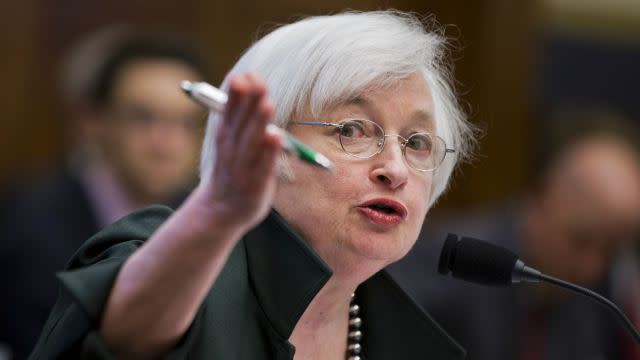The one bright spot in the US jobs report

Sometimes doing nothing is the right course of action.
That looks true after the US jobs report for September landed with a damp thwap this morning (Oct. 2). Some 142,000 new jobs were created during the month, far less than the roughly 200,000 that were expected.
In light of those numbers, the Federal Reserve’s Sept. 17 decision to delay the “liftoff” of short-term interest rates looks like an especially good call. Had the Fed gone ahead and tried to raise interest rates—despite collapsing global commodity prices and surging market volatility brought on by a sharp Chinese slowdown—soft job market data would have been far more alarming.
As it stands, markets seem to be betting that today’s weak jobs numbers push an interest rate increase even further out into the future. The benchmark US 10-year Treasury note tumbled below 2% after the employment report arrived, suggesting traders think the risk of a Fed hike isn’t imminent.

Such a delay might not be a bad thing. After all, the global economy is in the midst of a big shift, from a China-centric, emerging-market-oriented commodities boom, toward, well, we don’t really know.
Today’s jobs report notwithstanding, the US looks like the best source of solid economic growth over the near term. But the US is far from immune to the ailments of the global economy. On Tuesday, US natural gas company Chesapeake announced it was laying of 15% of its workers as it cuts drilling in response to low energy prices. Slumping grain prices knocked equipment manufacturer John Deere’s earnings down 40% in its most recent report. Leading indicators of manufacturing activity have weakened. Exports have been disappointing. And layoffs have jumped.
Still, there was a distinct—if unglamorous—bright spot in the latest jobs report. State and local governments have been on a bit of a hiring spree in recent months—they added a combined 26,000 jobs in September, traditionally a big month for the hiring of teachers.

The rebound in government jobs squares with other data, such as the recently released final US GDP numbers for the the second quarter. Those numbers showed government spending making the largest contribution to economic growth in years.

Here’s why this is a big deal: For much of the post-crisis era, government spending—traditionally a key Keynesian tool—has been a non-factor in the recovery. A series of chaotic confrontations between the Obama administration and Republican-dominated Congress have seen to that.
That’s left the Fed carrying more than its fair share of the burden for supporting the economy.
But the recent data suggests government could be a more meaningful contributor to growth over the near-term. If that’s true—and it’s a big if, with signs of another debt fight brewing—the Fed’s easy money policies will likely be more effective than they have been. In other words, the Fed will no longer be working at cross-purposes with the government.
And that means the US economy has a much better chance at achieving the kind of durable growth the Fed has been pursuing ever since the collapse of Lehman Brothers.
The Fed is very close to achieving its goals, and help is on the way. It just needs to hold on for a little while longer.

Sign up for the Quartz Daily Brief, our free daily newsletter with the world’s most important and interesting news.
More stories from Quartz:


